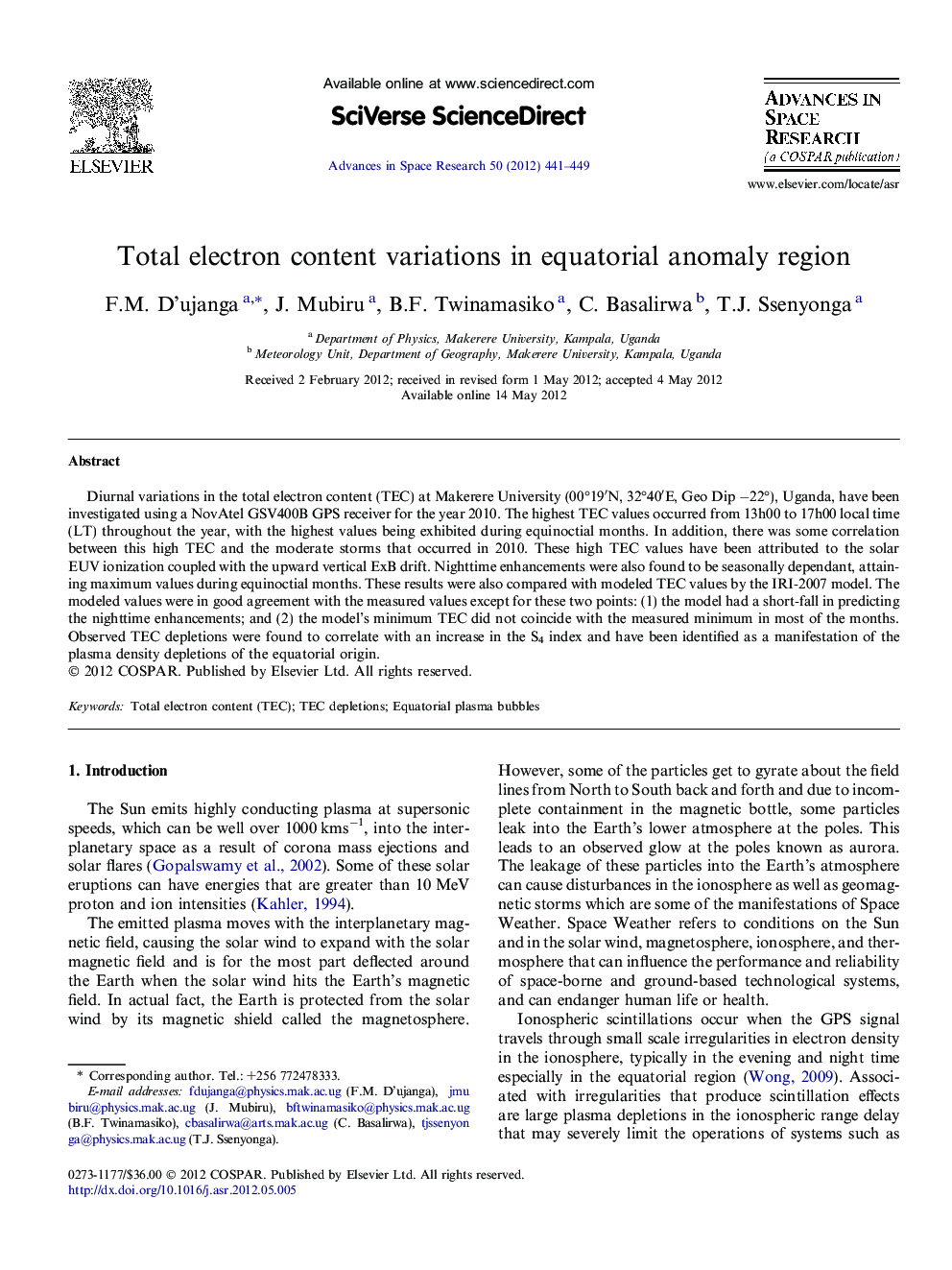| Article ID | Journal | Published Year | Pages | File Type |
|---|---|---|---|---|
| 1765850 | Advances in Space Research | 2012 | 9 Pages |
Diurnal variations in the total electron content (TEC) at Makerere University (00°19′N, 32°40′E, Geo Dip −22°), Uganda, have been investigated using a NovAtel GSV400B GPS receiver for the year 2010. The highest TEC values occurred from 13h00 to 17h00 local time (LT) throughout the year, with the highest values being exhibited during equinoctial months. In addition, there was some correlation between this high TEC and the moderate storms that occurred in 2010. These high TEC values have been attributed to the solar EUV ionization coupled with the upward vertical ExB drift. Nighttime enhancements were also found to be seasonally dependant, attaining maximum values during equinoctial months. These results were also compared with modeled TEC values by the IRI-2007 model. The modeled values were in good agreement with the measured values except for these two points: (1) the model had a short-fall in predicting the nighttime enhancements; and (2) the model’s minimum TEC did not coincide with the measured minimum in most of the months. Observed TEC depletions were found to correlate with an increase in the S4 index and have been identified as a manifestation of the plasma density depletions of the equatorial origin.
